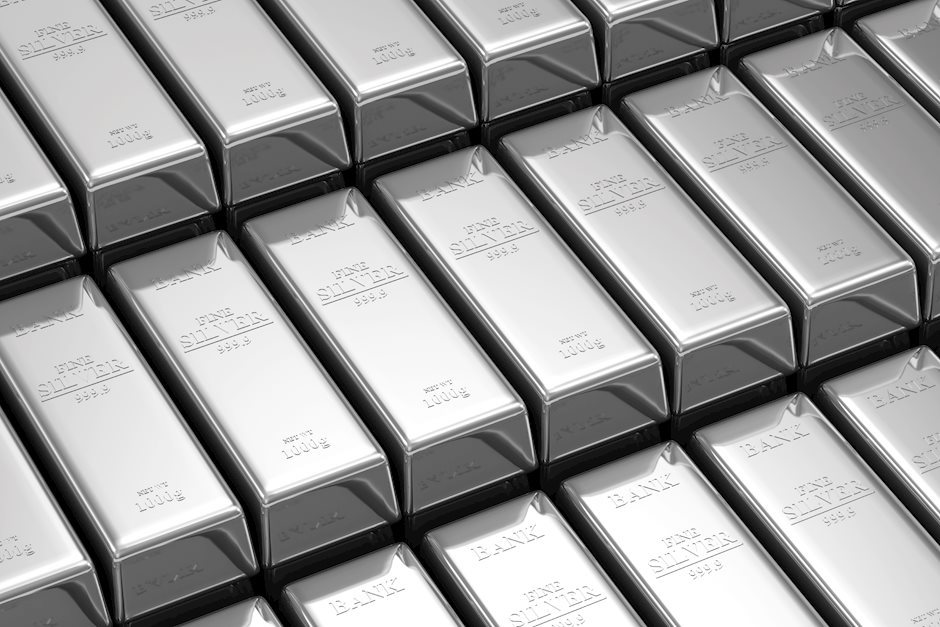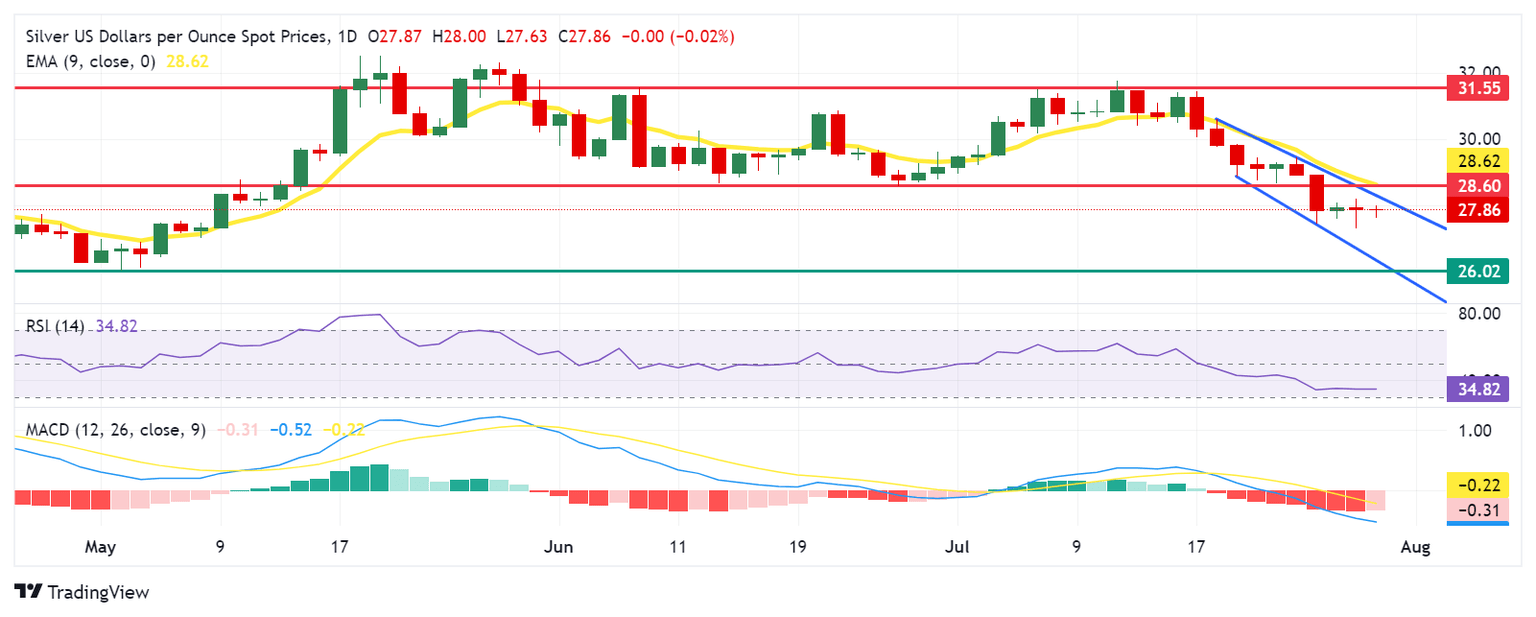Silver Price Forecast: XAG/USD could surpass $28.00 to test upper boundary of the channel
- Silver price may approach the lower boundary of the descending channel at $26.40.
- Silver price consolidates within the descending channel pattern, suggesting a bearish bias.
- A breakthrough above the upper boundary of the descending channel could weaken the bearish bias.

Silver price holds position around the $28.00 level per troy ounce during the European session on Tuesday. The analysis of the daily chart indicates a bearish bias as the XAG/USD pair consolidates within the descending channel pattern.
Additionally, the 14-day Relative Strength Index (RSI) is consolidating above 30 level, suggesting confirmation of a downward trend. A break below the 30 level would indicate an oversold situation of the asset currency and is due for a correction in the short term.
Additionally, the momentum indicator Moving Average Convergence Divergence (MACD) suggests a bearish trend for Silver price. This configuration indicates that the overall trend is negative as the MACD line is above the centreline and the signal line.
In terms of support, the Silver price could navigate the area around the lower boundary of the descending channel at $26.40, followed by May’s low at $26.02 level.
On the upside, the Silver price could find immediate resistance around the upper boundary of the descending channel at the level of $28.30, followed by the “throwback support turned resistance” at the $28.60 level and nine-day Exponential Moving Average (EMA) at the $28.63 level.
A breakthrough above the latter could lead the XAG/USD pair to explore the region around the two-month high at the $31.75 level.
XAG/USD: Daily Chart
Silver FAQs
Silver is a precious metal highly traded among investors. It has been historically used as a store of value and a medium of exchange. Although less popular than Gold, traders may turn to Silver to diversify their investment portfolio, for its intrinsic value or as a potential hedge during high-inflation periods. Investors can buy physical Silver, in coins or in bars, or trade it through vehicles such as Exchange Traded Funds, which track its price on international markets.
Silver prices can move due to a wide range of factors. Geopolitical instability or fears of a deep recession can make Silver price escalate due to its safe-haven status, although to a lesser extent than Gold's. As a yieldless asset, Silver tends to rise with lower interest rates. Its moves also depend on how the US Dollar (USD) behaves as the asset is priced in dollars (XAG/USD). A strong Dollar tends to keep the price of Silver at bay, whereas a weaker Dollar is likely to propel prices up. Other factors such as investment demand, mining supply – Silver is much more abundant than Gold – and recycling rates can also affect prices.
Silver is widely used in industry, particularly in sectors such as electronics or solar energy, as it has one of the highest electric conductivity of all metals – more than Copper and Gold. A surge in demand can increase prices, while a decline tends to lower them. Dynamics in the US, Chinese and Indian economies can also contribute to price swings: for the US and particularly China, their big industrial sectors use Silver in various processes; in India, consumers’ demand for the precious metal for jewellery also plays a key role in setting prices.
Silver prices tend to follow Gold's moves. When Gold prices rise, Silver typically follows suit, as their status as safe-haven assets is similar. The Gold/Silver ratio, which shows the number of ounces of Silver needed to equal the value of one ounce of Gold, may help to determine the relative valuation between both metals. Some investors may consider a high ratio as an indicator that Silver is undervalued, or Gold is overvalued. On the contrary, a low ratio might suggest that Gold is undervalued relative to Silver.
Author

Akhtar Faruqui
FXStreet
Akhtar Faruqui is a Forex Analyst based in New Delhi, India. With a keen eye for market trends and a passion for dissecting complex financial dynamics, he is dedicated to delivering accurate and insightful Forex news and analysis.


















